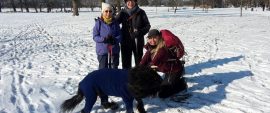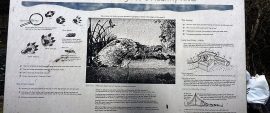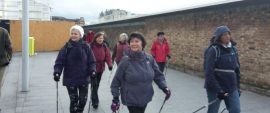Knee pain? These 8 do’s and don’ts can help

Have a sore knee, ankle or hip? Worried if you can do Nordic Walking? You might find Nordic Walking will help alleviate your symptoms!
Knee pain has a number of different causes. There are many things you can do to help knee pain, whether it’s due to a recent injury or arthritis you’ve had for years. According to Arthritis UK, low impact exercise and keeping to a healthy weight can reduce symptoms, whatever the cause of the pain.
Follow these 8 dos and don’ts to help your knees feel their best.
Do get expert advice. Especially if your knee pain is new, get a doctor to check it out. It’s best to know what you’re dealing with ASAP, so you can prevent any further damage.
Don’t rest too much. Too much rest can weaken your muscles, which can worsen joint pain.
Do exercise. Find an exercise program that is safe for your knees and stick with it. Cardio exercises strengthen the muscles that support your knee and increase flexibility. Weight training and stretching do, too.
Nordic Walking is a great option. Many of our clients find their knee pain reduces or even vanishes after a couple of sessions. And at Fit and Happy Outdoors, we like to include exercises that are recommended to strengthen the muscles around your knees in our sessions. If you’re not sure which motions are safe or how much you can do, talk with your instructor!
Are your symptoms acute? Do play with temperature. Rest, ice, compression, and elevation (RICE) is good for knee pain caused by a minor injury or an arthritis flare. For the first 48 to 72 hours after a knee injury, give your knee some rest, keep it elevated and use a cold pack to ease swelling and numb the pain. A plastic bag of ice or frozen peas works well. Use it for 15 to 20 minutes three or four times a day. Wrap your ice pack in a towel to be kind to your skin. Wearing a compressive bandage can be a good idea too.
Don’t overlook your weight. If you’re overweight, losing weight reduces the stress on your knee. You don’t even need to get to your “ideal” weight. Smaller changes still make a difference. And Nordic Walking can really help with that!
Don’t be shy about using a walking aid. A crutch or cane can take the stress off your knee. And our clients find that Nordic Walking poles really help take the weight off your knees too.
Don’t jar your joint(s). High-impact exercises can further injure painful knees. Avoid jarring exercises such as running, jumping, and kickboxing.
Don’t risk a fall. A painful or unstable knee can make a fall more likely, which can cause further knee damage. Regular exercise can help strengthen the muscles around you knees, which will help with your stability. Exercise also trains your brain to improve coordination and balance. Try Nordic Walking, Yoga, Pilates or Canoeing to help improve your stability.
Want some extra training next to your regular Nordic Walking class? Arthritis UK has some great exercises to try at home.












